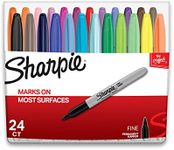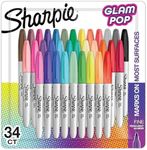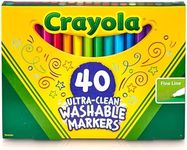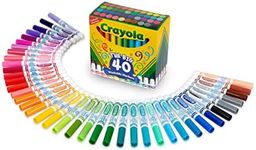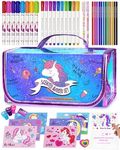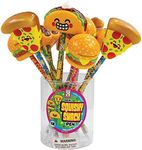Buying Guide for the Best Color Markers
Choosing the right color markers can greatly enhance your art projects, presentations, or even everyday note-taking. The key to finding the best markers for your needs is to consider the specific features that will impact your usage. Here are some important specifications to keep in mind when selecting color markers.Tip TypeThe tip type of a marker determines the kind of lines you can create. Fine tips are great for detailed work and writing, while broad tips are better for coloring large areas quickly. Brush tips offer versatility, allowing you to create both thin and thick lines depending on the pressure applied. Choose a tip type based on the kind of work you plan to do. For detailed illustrations or writing, fine tips are ideal. For coloring or calligraphy, consider broad or brush tips.
Ink TypeMarkers come with different types of ink, such as water-based, alcohol-based, and solvent-based. Water-based inks are less likely to bleed through paper and are easier to clean up, making them suitable for children and casual use. Alcohol-based inks dry quickly and are permanent, ideal for professional artists and crafters. Solvent-based inks are durable and can write on various surfaces, including glass and metal. Choose the ink type based on your project needs and the surfaces you will be working on.
Color RangeThe range of colors available in a marker set can vary widely. Some sets offer a basic selection of primary and secondary colors, while others provide a vast array of shades and tones. If you need markers for simple tasks like labeling or note-taking, a basic set may suffice. However, for artistic projects, a larger color range will give you more creative freedom. Consider the scope of your work and how many colors you realistically need.
BlendabilityBlendability refers to how well the colors mix together. Some markers are designed to blend seamlessly, allowing you to create gradients and new shades. This is particularly important for artists who want to achieve smooth transitions between colors. If blending is a key part of your work, look for markers specifically labeled as blendable. For general use, blendability may not be as crucial.
DurabilityDurability covers both the longevity of the marker itself and the permanence of the ink. High-quality markers will last longer and maintain their performance over time. Permanent inks are resistant to fading and smudging, making them suitable for archival work. If you need markers for professional or long-term projects, prioritize durability. For casual or temporary use, this may be less important.
Non-ToxicNon-toxic markers are safe for use by children and in environments where safety is a concern. These markers are made without harmful chemicals and are often labeled as such. If you are purchasing markers for kids or for use in a school setting, always check for non-toxic certification. For adult use, this may be less critical, but it's still a good feature to consider for overall safety.
